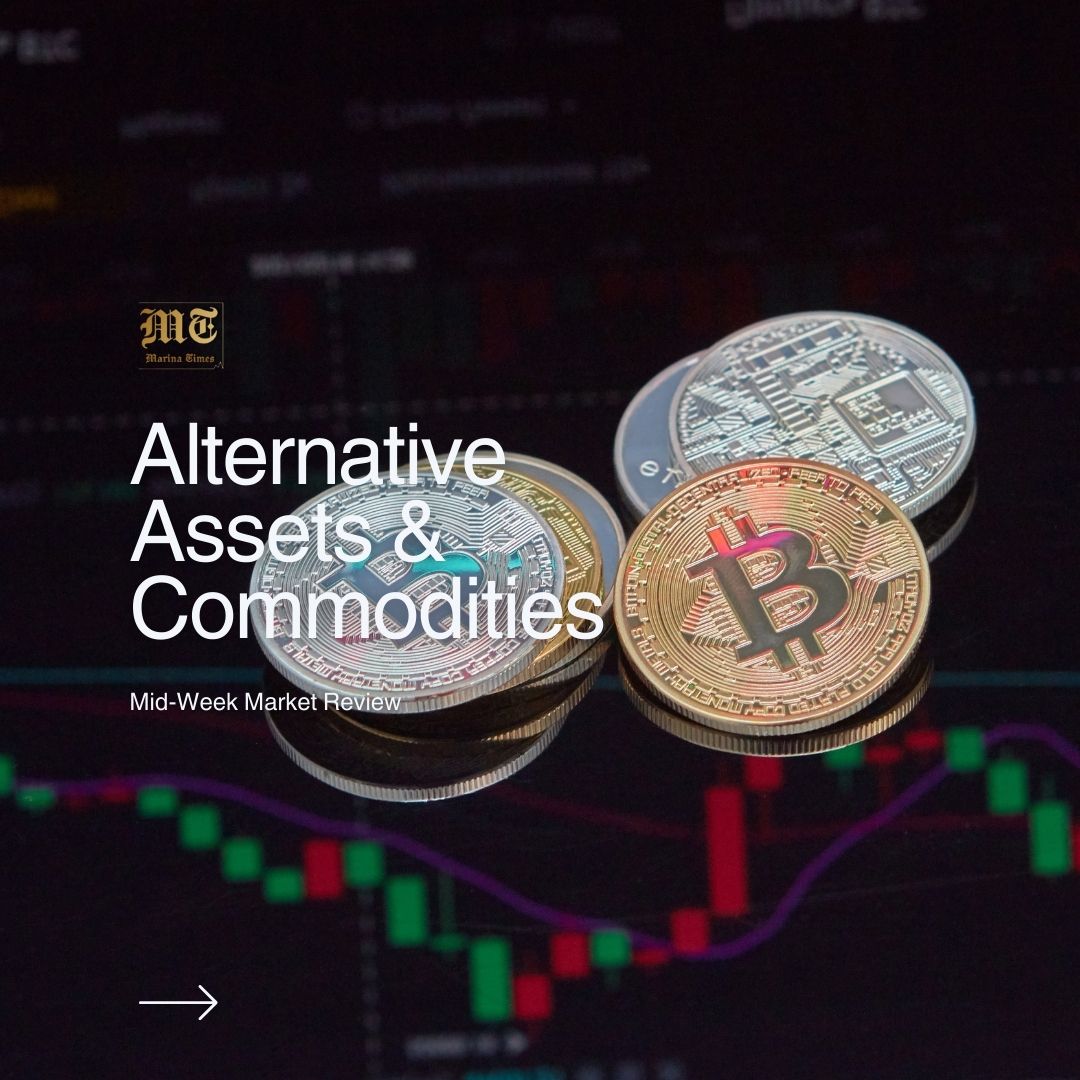

Crude oil markets remain on edge amid a complex mix of geopolitical developments, shifting supply expectations and economic concerns that drive investor sentiment.
Last week, President Trump suggested that Ukraine’s leadership was obstructing efforts to reach a peace agreement with Russia, a development that could potentially open the door to increased Russian oil exports. Meanwhile, Europe is pushing ahead with efforts to end its dependency on Russian energy. European Commission President Ursula von der Leyen confirmed that a strategy to eliminate Russian fossil fuel imports by 2027 would be unveiled within two weeks.
In the oil markets, crude prices rose slightly last Thursday. Brent crude edged up 41 cents to close at $66.54 per barrel, while West Texas Intermediate (WTI) gained 50 cents, settling at $62.77. A weaker US Dollar contributed to the uptick, making oil cheaper for buyers using other currencies. Additional market influences included speculation about increased OPEC+ production, mixed signals on US trade policy and ongoing developments in the Russia-Ukraine conflict.
The diplomatic front also stirred investor interest. Iranian Foreign Minister Abbas Araqchi expressed willingness to meet European leaders to revive talks around Tehran’s nuclear programme. French officials indicated openness to negotiations, provided Iran shows a genuine commitment. A breakthrough could lead to a rollback of sanctions on Iranian oil exports.
As the week progressed, focus shifted toward the upcoming US economic data. Key indicators, including the job openings report, Personal Consumption Expenditures (PCE) index and non-farm payrolls, are expected to offer clues about demand-side strength.
Despite early gains, oil prices turned lower on Monday. Brent crude dropped $1.29 to $65.62, while WTI fell $1.28 to $62.05. Weaker demand expectations tied to the US-China trade conflict pressured prices. Speculations grew that OPEC+ might approve another round of output hikes at its upcoming May 5 meeting.
Tensions escalated over the weekend following a deadly explosion at Iran’s Bandar Abbas port, which killed at least 40 and injured more than 1,200, casting uncertainty over ongoing US-Iran nuclear talks in Oman. Araqchi struck a more cautious tone, citing significant hurdles to a successful agreement.
On Tuesday, oil prices plunged over 2.5%, hitting a two-week low as fears of rising OPEC+ production and economic fallout from US tariffs intensified. Brent settled at $63.93, while WTI closed at $60.14, both marking their lowest levels since April 10.
Further downward pressure came from earnings reports. British Petroleum (BP) posted a 48% decline in quarterly net profit to $1.4 billion, citing weaker refining margins and poor gas trading performance. Investors now await financial results from US energy giants like Exxon Mobil and Chevron.
Supply developments also played a role. Several OPEC+ members are expected to back increased production for a second straight month in June. Kazakhstan reported a 7% year-over-year jump in Q1 oil exports, supported by higher volumes through the Caspian pipeline.
As of early Wednesday, WTI futures hovered near $59.89, and Brent slipped to $62.74, extending a three-day losing streak. Oil is on track for a monthly decline of over 16%, the steepest drop since November 2021. The market continues to reel from uncertainty surrounding trade policy, deteriorating US-China relations, and growing fears of a global economic slowdown. Declining US consumer confidence and a surprise inventory build of 3.76 million barrels, far above the expected 390,000, added to the bearish outlook.
The cryptocurrency market saw dramatic swings over the past week, with Bitcoin (BTC) and Ethereum (ETH) following divergent paths in response to major macro events, institutional moves and on-chain activity.
Bitcoin surged past $95,000 briefly, driven by a massive $917 million daily inflow into U.S. spot Bitcoin ETFs on April 23, with BlackRock scooping up $240 million in BTC over 72 hours. Public companies grabbed 425,000 BTC recently, and exchange reserves dropped to a six-year low of 2.6 million BTC, suggesting a supply squeeze. But the ‘institutional adoption’ narrative feels overhyped, liquidity’s thin, and new buyer momentum is fading. Arthur Hayes’ claim that this is the ‘last chance’ to buy BTC under $100,000, tied to a weak U.S. Dollar and Treasury buybacks, sounds like classic pump rhetoric.
Ethereum broke above $1,800 briefly, outpacing altcoins with a 10.7% spike in 48 hours on April 23, compared to BTC’s 7.7%. Still, it’s trapped in a four-month downtrend, with bearish charts hinting at a possible slide to $1,100 if $1,688 support breaks. The Pectra upgrade (May 7) is stirring hype for scaling fixes, but ETH’s market dominance is at a low 7.18%, with Solana eating into its DEX volume and gas fees soaring past $20. Whales accumulated 1.11 million ETH, yet 178,900 ETH ($317 million) hit exchanges, signaling sell-off risks. The London Hard Fork’s deflationary story is also shaky—ETH supply keeps creeping up.
Dogecoin, Solana, and Sui jumped 8–11.7% on April 22, with Tron spiking 10.4%, moving independently of the market. Liquidations reached $624 million in 24 hours, mostly shorts, which eased downward pressure. But macro risks—U.S.-China trade tensions, tariff fears—and a potential Bitcoin ‘death cross’ point to turbulence. Standard Chartered’s prediction of a 500% XRP surge by 2028, possibly overtaking ETH due to ETF approval, made waves, but a security flaw in the XRP Ledger this week undercuts the optimism.
On the 23rd of April, 2025, Bitcoin officially surpassed Google to become the 5th largest asset in the world by market cap. This is truly wild to even say out loud. Bitcoin was an inconceivable idea in the not-so-distant past. Joy might be coming to crypto after all!
In other news, regulatory moves include Arizona’s bills allowing the state to hold BTC or other cryptos as reserves, a potential adoption win. Coinbase’s Bitcoin Yield Fund, launching May 1 for non-U.S. institutions with 4–8% returns, feels like centralized irony for a decentralized asset. U.S.-China trade optimism, with Trump hinting at tariff cuts, boosted risk assets, but fears of China dumping $16 billion in BTC and Trump’s earlier Nvidia restrictions caused volatility. U.S. 10-year Treasury yields (3.9% to 4.6%) are influencing crypto more than tech upgrades.
Crypto crime in China ballooned to $59 billion in 2023, with 3,032 people sued for money laundering, fueling the ‘crypto is shady’ narrative. The market remains a speculative arena, swaying with Trump tweets and tariff rumors. Bitcoin’s ‘digital gold’ narrative holds firm, but ETH’s ‘DeFi revolution’ is losing ground to faster chains like Solana.
BTC ranged from $91,508 to $95,261.81, peaking above $95,000 on April 26. It’s up ~12% for the week, with a 6.8% leap on April 23, now settling around $92,500–$93,500. ETF inflows ($381.4M on April 22), short liquidations ($300M+), and trade optimism powered it, but declining demand (146,000 BTC drop in 30 days) and low liquidity limit upside. If ETF flows falter or macro pressures mount, $90,000 support could crack.
ETH ranged from $1,703 to $1,837.49, briefly topping $1,800 on April 23, up 8–13% for the week with a 10.7% surge in 48 hours. It’s now at $1,770–$1,837, dipping 0.8–2.2% on quieter days. A technical breakout, whale accumulation (1.11M ETH), and Pectra hype drove gains, but bearish signals (RSI <50, exchange outflows) and Solana’s rise dampen momentum. A fall to $1,100 is possible if sentiment turns.
The market’s fueled by institutional FOMO and trade deal hopes, but it’s shaky. BTC’s ETF-driven rally is robust yet macro-sensitive, and ETH’s struggling to stay relevant. Social media is bullish, especially for BTC, but often inflates narratives.
Mastercard on the 28th of April, 2025, added stable coin settlement support for merchants. This means that people will be able to spend crypto currencies (stables such as USDT, USDC, USD) directly from their wallets through their cards. This move screams BULLISH because it will enable millions of users to access their crypto and spend without the hassle of banking.
Michael Saylor has done it again this week, as usual. His company, ‘Strategy’ bought 15,355 Bitcoin worth $1.42 billion on the 28th of April, 2025.